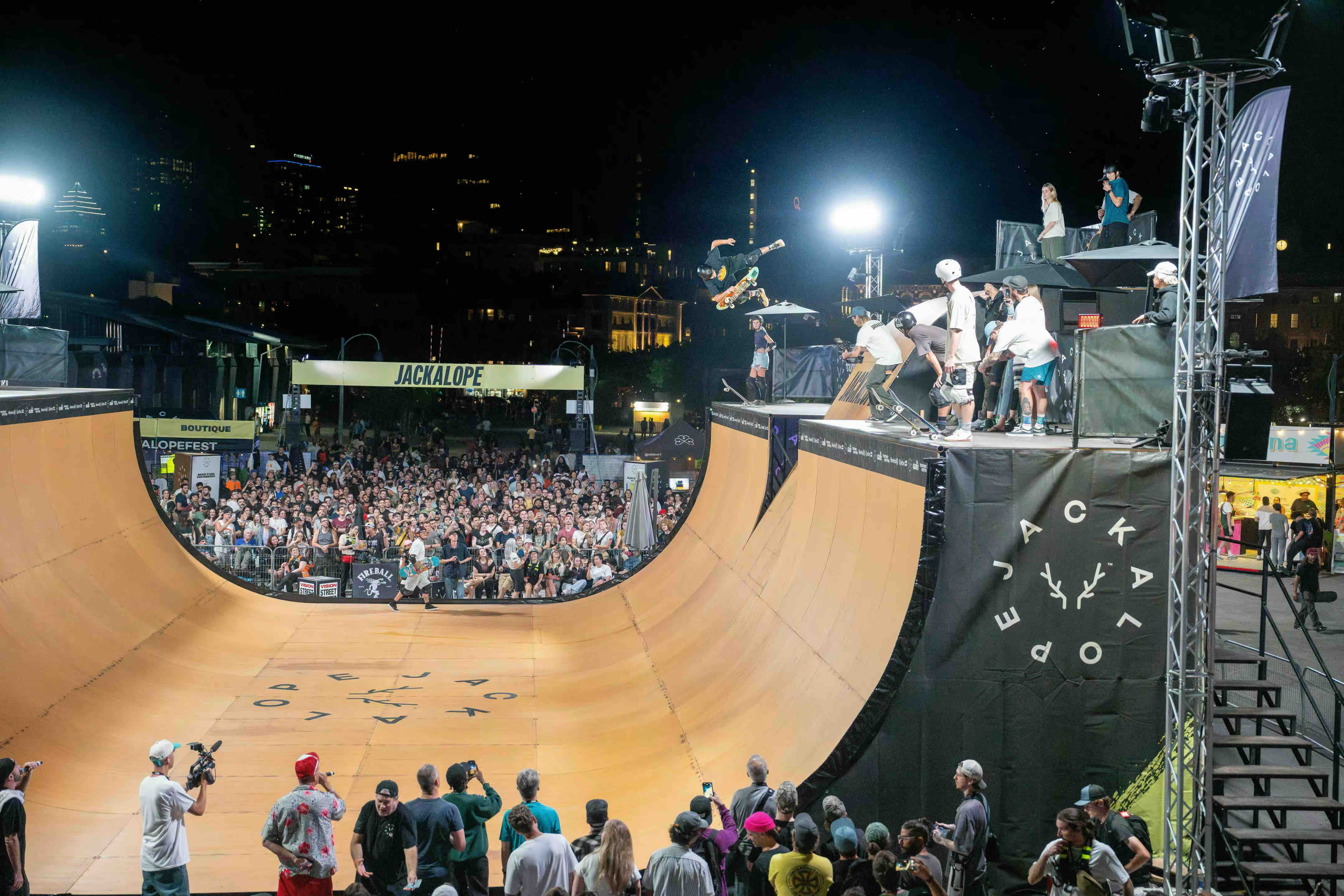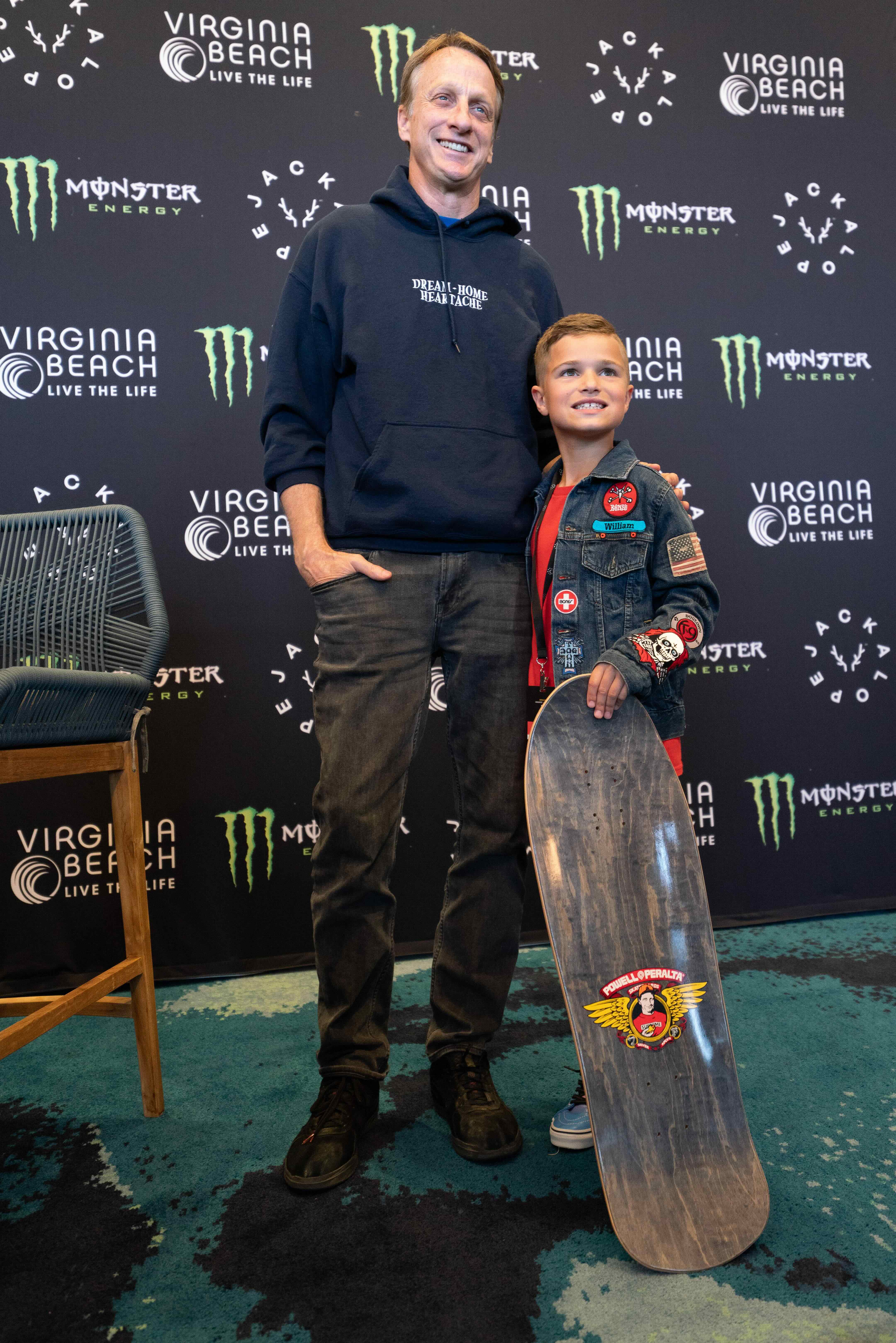Mitchie Brusco has seized this opportunity as well. Beyond his impressive career in vert skateboarding, he launched Skate IQ, a coaching program focused on a deep technical understanding of the sport, offering skill-building sessions through various events and competitions, including JACKALOPE.
In addition to the technical aspects, this direct connection also allows young riders to understand what makes a skateboarder a renowned athlete—and even, in some cases, an exceptional person.
Gen Z also has a variety of role models and inspirations within their own age group. What was once considered an exception is now commonplace: it’s no longer rare to see teenagers sharing the podium with legends, thanks to feats that even these legends have yet to accomplish (or might never achieve).
For example, Gui Khury, at just 12 years old, landed a 1080 at the X Games, making him a reference in the world of skateboarding. And the list of young athletes performing unique sports feats goes on—Jada Ward (16 years old), Mia Kretzer (10 years old), Leonardo Vinicius (12 years old), Jd Sanchez (14 years old), Rayssa Leal (16 years old), and more. These athletes are not only stars on social media platforms, but also references in their respective disciplines. They allow younger generations to follow their progress in real time, and by doing so, offer a role model that they can relate to.

This proximity is an immediate source of inspiration for millions of young people who project themselves through these achievements. Today, the dream seems more accessible than ever, thanks to this instant visibility.

New Generation, New Vision
Today’s young athletes, like 14-year-old Yoshizawa Coco (gold medalist in skateboarding at the 2024 Olympics), are entering a world where competition is no longer a rare event, but a regular opportunity.
The accessibility to local events, such as JACKALOPE, and the growing frequency of international competitions allow young athletes to get involved much earlier— a luxury that their predecessors didn’t always have.
Ema Kawakami, a 9-year-old Japanese prodigy who stunned audiences by landing three consecutive 900s at the Tony Hawk’s Vert Alert, a historic feat (he even landed the 900 multiple times during the last edition of JACKALOPE in Mississauga), also embodies this transition. Their presence on global stages at such a young age wouldn’t have been possible just a few years ago. Their rapid evolution and visibility at major events have become central to attracting a younger audience that seeks to identify not only with the performance, but also with the authenticity of the athletes.
Early specialization and participation in youth-focused competitions are key factors that allow athletes to stand out in action sports. Many athletes choose to fully dedicate themselves to their discipline from a young age, taking part in events with categories specifically designed for their age group, or other competitions reserved for young athletes. These events give athletes the opportunity to compete against other talents of their age, while also gaining valuable experience from more seasoned competitors.
Sébastien Toutant, known as “Seb Toots,” is a prime example of early specialization that characterizes today’s action sports athletes. At just 13 years old, he began to make a name for himself in snowboarding by winning his first professional event. This achievement propelled him onto the international stage, and from there, he racked up victories in major competitions. Toutant continued to shine at the highest level, notably winning the gold medal in Big Air at the 2018 Winter Olympics. His rapid progression is the result of years of dedicated work and participation in competitions specifically tailored for young talents.
Young athletes, far from limiting themselves to technical mastery alone, also develop an incredible ability to handle pressure and stress. Starting young, they become accustomed to intense competition, which forges a steel-like mentality. Rayssa Leal, who won the silver medal at the Tokyo Olympics at just 13 years old and was discovered by Tony Hawk when she was only 8, is a perfect example of this resilience.
Against more experienced competitors, she managed to keep her composure and focus—qualities that are essential to succeed at the highest level. She recently added a bronze medal at the Paris 2024 Olympics to her already impressive record, making her the youngest Brazilian to win Olympic medals on two occasions. Her ability to perform under pressure highlights the mental strength that many young athletes today are developing through early exposure to high-level competitions.
When Passion Becomes a Powerful Vector of Influence
The growing passion for action sports among young people, driven by a new generation of athletes, is far from being just a passing trend. It reflects a profound transformation, where sports like skateboarding, snowboarding, and mountain biking have become channels of expression and performance that deeply resonate with a young, engaged audience.
By partnering with events like JACKALOPE, APIK, or CRANKWORX, our partners are not merely investing in an event—they are actively participating in the creation of the sports culture of tomorrow. This culture is fueled by young talents, modern legends, and unwavering passion. This is where the opportunity lies: at the very heart of this evolution.
The disciplines at the heart of our events capture the attention of an audience that knows exactly what it wants—and what it doesn’t. A passionate, hyper-connected audience. The athletes these events bring together are a pool of micro and macro influencers, offering exclusive access to entire communities, eager to identify with products that align with their values.
Full Steam Ahead
Gen Z is taking action sports by storm, and brace yourselves—it’s not just a fleeting trend. They are the quiet force redefining the rules at the very core of the matrix. With access to perfectly crafted spots, near-daily inspiration from their role models and mentors, as well as a variety of competitions to fine-tune their craft, they are pushing boundaries where we once thought we had reached the peak.
Podiums are no longer the ultimate goal. Equipped with an unbreakable mental strength from very early on, they want to leave their mark and be an integral part of this sports revolution.
This generation doesn’t just want to participate—it wants to change everything. Ignoring this transformation means standing on the sidelines of the next great story in sports.



